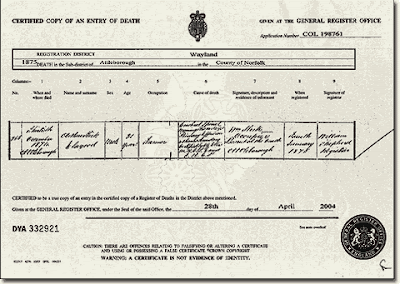 |
| End point. And the starting point for some interesting work. |
At least the ones who make adjustments are trying to be conscientious. I know of one consultant who submitted a report to a hospital showing that a cardiac surgeon had a one in three death rate for a particular procedure, which was frighteningly high compared to national values. It turned out that the surgeon had carried out just three of those operations in a year and one patient had died. So it was a meaningless statistic and the report demonstrated nothing but the incompetence of the consultant.
Besides, in doing these studies, people generally base themselves on in-hospital mortality. You may know the story of the man walking home one night and finding another on his hands and knees underneath a lamppost.
‘What’s the problem?’ asks the first man.
‘I’ve lost a contact lens and I’m looking for it,’ replies the second.
‘OK , let me help.’
After twenty minutes of fruitless searching, the first man says, ‘are you sure you lost the contact lens here?’
‘Oh no,’ says the second, ‘it was nowhere near here. But this is the only place with any light.’
In-hospital mortality is like that. Hospitals record deaths meticulously, so the figures are there. But that doesn’t mean that they’re a good place to start looking for answers.
First of all, they're a lousy indicator for something like Obstetrics. In the developed world, deaths in childbirth are now incredibly rare (though there are indications of a worrying tick upwards in the United States) so the numbers don’t tell you much. On the other hand, in palliative care, mortality is extremely high, but that’s the nature of the discipline, so again the rates aren't particularly helpful.
Mortality is only useful when you apply it to areas where there is a relatively high risk of death, but specifically of avoidable death. Stroke care. Cardiology. Various types of organ failure. That kind of thing.
But also it’s no good using just in-hospital deaths. Cases get transferred between hospitals. A general hospital might move a particularly ill patient to the specialist centre up the road. If the patient dies, which hospital should be concerned, the first or the second?
Incidentally, it’s a curious peculiarity in England at least, that if the patient dies in the ambulance between the two hospitals, neither gets the death assigned to it.
Again, some hospitals keep their lengths of stay low. This is a good thing from the point of view of financial efficiency and may even be good for patient care: hospitals are dangerous places (full of sick people) and the sooner you get home the less likely you are to pick up an infection. But, if a patient is discharged quickly and then dies at home, that death won’t be recorded against the hospital either.
What has got me enthusiastic recently is that a body in the NHS, the Information Centre, has for two or three years been linking English hospital data with general records of deaths held by the Office of National Statistics. This means that they can now make available information about patients who died following hospital treatment, whether or not the death took place inside the hospital.
So we can get a clear idea of how many people are surviving or dying after hospital treatment for a stroke or an aneurysm, even though the death took place after the hospital discharged the patient.
I'm about to apply to be given access to the information. That may give me some better ways of understanding how well individual hospitals are delivering specific types of care for specific types of condition.
It’s a bit sad to admit, but that’s the kind of thing that makes me excited about the work I do.
2 comments:
Edifying!
again i forgot to sign my name
san
Post a Comment